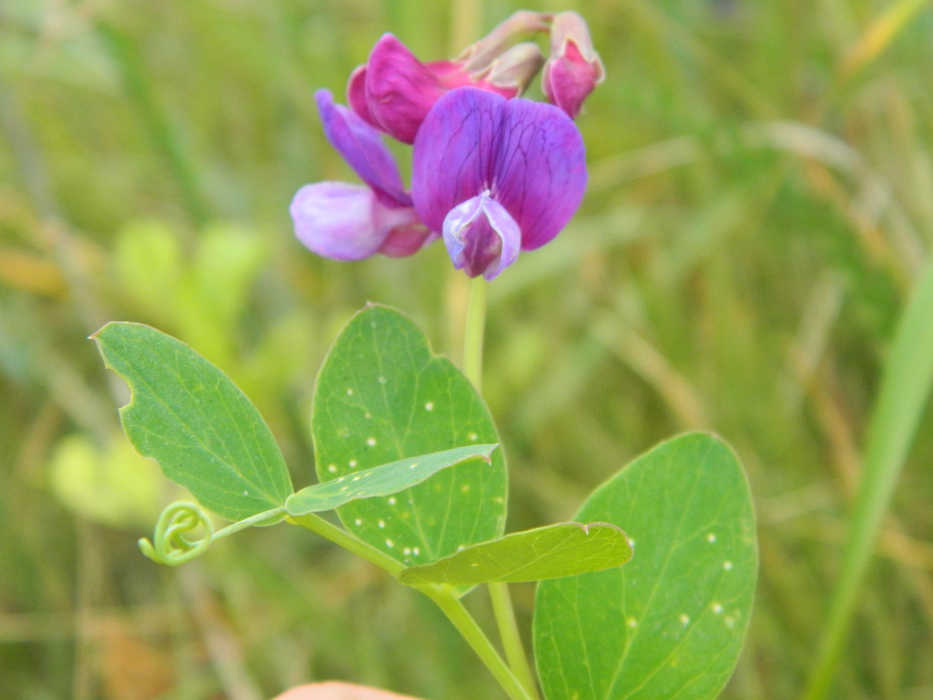The story “Into the Wild” is one of the most wildly popular Alaskan stories out there. Whether you follow the story with a sense of wonder and envy, or can’t help but scoff at the decision to take off into the wilderness with less than a day’s worth of food, you’ve undoubtedly heard the story. Man leaves the confines of society and dies 113 days later in a bus outside of Denali. The official reports? Death by starvation.
Today, however, we have a different picture of what happened. And it’s one that can be readily applied to our own backyards.
The Eskimo potato, Hedysarum alpinum or alpine sweetvetch, is a hardy little plant that grows across Alaska and into northern Canada — including here on the Kenai National Wildlife Refuge. It’s identified by pea-shaped flowers that range from light pink to purple. It has an edible carrot-like root that has been used as a food source, raw or cooked, by many Alaska Natives and live-off-the-land subsistence folk.
Apparently, you just shouldn’t eat the seeds. One of the last entries in McCandless’ journal seems to incriminate Eskimo potato seeds as the reason for his apparent starvation. For quite some time, it was believed that McCandless made the mistake of eating a wild sweet pea, Hedysarum mackenzii or bear root. Eskimo potato isn’t known to have alkaloids, but wild sweet pea is — it’s highly toxic. The two plants are extraordinarily similar in their appearance. They’re easiest to tell apart in the summer while in bloom — Eskimo potato has smaller flowers. It seems like a pretty reasonable explanation for McCandless’ death, right?
Things actually get a whole lot more complicated. In a paper called “The Silent Fire” written by Ronald Hamilton, there is a description of a World War II concentration camp in Vapniarca, Ukraine. In the camp, prisoners are fed bread made from Lathyrus saativus, or grass pea. The prisoners at the camp were reported stricken with a condition called lathyrism, which causes weakness and paralysis. The symptoms stem from an amino acid known in shorthand as ODAP. But the most intriguing part? The grass pea, wild sweet pea and Eskimo potato are in the same family, Fabaceae.
Now, that’s not to say that all Fabaceae are poisonous. The Fabaceae family contains some of the most important food plants out there — including soybeans, beans, peas, chickpeas and peanuts. We eat plenty of them every day. That peanut butter you smothered all over your sandwich isn’t going to suddenly strike you dead from ODAP or anything of the sort — unless you’re exceptionally allergic, but that’s a whole different issue that I can’t exactly help with. However, less cultivated species of Fabaceae plants can have alkaloids in their seeds that make them indigestible — even the lupines that are so common here on the Refuge are packed with them. But amino acids weren’t on the radar when initial investigations into McCandless’ death were ongoing. So could this be the answer? Almost.
Analysis of the Eskimo potato came back with an amino acid all right, but not ODAP. It was an amino acid called L-canavinine. It’s pretty similar to a common amino acid in all of our bodies, arginine, so it can trick the cells into taking it up. And it’s another common toxin in the Fabaceae family used in predator protection. If you’re an herbivore that tries to eat a plant packed with toxins, it’s a mistake you won’t make twice.
Now, before you start to panic about how many different plants could kill you out there in the wilderness, I’ll say this: neither wild sweet pea nor grass pea is known to be here on the Refuge. There are two different species of pea here, the beach pea, Lathyrus maritimus, and the vetchling, Lathyrus palustris. Neither of these is known to be innately poisonous. In fact, beach pea seeds are edible. You should still be careful though — they can take up toxins from the soil around them pretty readily.
So whether we’ve solved the mystery of McCandless’ death or not, there’s one thing to be said: go easy on the Eskimo potato, and don’t go munching willy-nilly on plants. We learn new things about them every day. Don’t be a teachable moment.
Jenny Archis is an undergraduate biological intern at the Kenai National Wildlife Refuge. Find more information at http://www.fws.gov/refuge/kenai/ or http://www.facebook.com/kenainationalwildliferefuge.

